When we undertake a new project, whether in or outside of the garden, it can be tough knowing just where to get started. Gardening isn’t as cut-and-dried as digging in the dirt and tossing down a handful of seeds. Many factors go into building a healthy and thriving garden.
Like anything worthwhile, building a thriving and productive garden involves considering many things. Climate, soil type, sun exposure, and pest control, among other things, are all important factors. At Epic Gardening, we want to help everyone learn to grow. If you are a beginner in the flower garden, here are some helpful tips you can take to get off on the right foot.
Know Your Climate and Environment
My first beginner flower gardener tip is to plant native species. It stands to reason that most plants thrive best in the environment they have naturally adapted to. The easiest plants to sustain are native to your particular geographic location. Plants that are native to a similar climate will typically work as well.
Planting native makes gardening easier, as those plants will thrive with little to no care once established. However, there will be annuals native to other locations that you will likely want to grow. Those are typically fine for beginner gardeners as well. Whether it is important to you to grow native plants is a personal decision.
Knowing your climate zone is the first step in determining what kind of plants will thrive in your garden. Once you know your zone, the next things to consider are humidity and soil. If you live in an arid climate, even though it may be warm enough for tropical plants. However, it will be difficult to grow them. Other plants that are susceptible to fungus and rot will struggle in very humid climates.
Soil composition will also vary by geographic location. Where you are located will determine whether your soil is likely to be sandy, salty, clay-heavy, or silt-heavy. Some plants handle different soil types better than others. You may need to amend your soil if you want to grow certain things.
Understand Sun Exposure
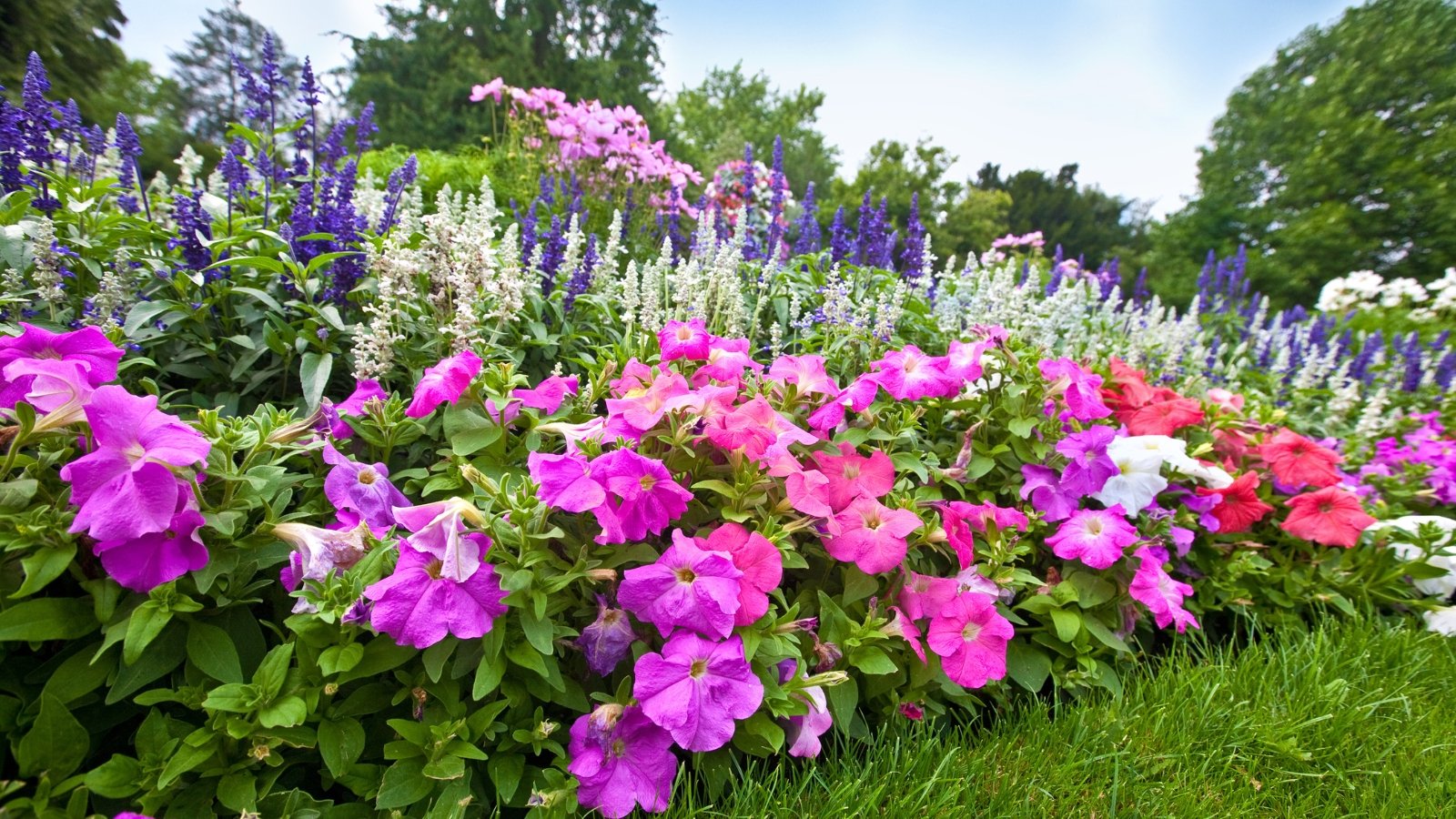
Our second beginner flower gardener tip is to understand sun exposure. There are different levels of exposure, commonly referred to as full sun, partial shade/partial sun, full shade, bright indirect light, and dappled shade. Before you decide upon a location for your garden, it is important to observe your yard. Make note of the type of exposure in different areas.
Full sun means that the location receives at least six hours of sunlight per day. Partial shade or partial sun means that the space will have sun for between four and six hours during the day. These exposure types refer to direct sunlight.
Bright, indirect light refers to environments where there is sunlight, but you can place plants where they will not get direct exposure. The dappled sun would be lightly filtered through the canopy of a tree. Full shade, while it is commonly undesirable for flower gardens, occasionally pops up in a plant’s description.
This is a great time to create a map of your yard, which you will use later to plan your garden. Choose a sunny day when you will be at home for most of the day. Observe the light conditions in your yard over time and denote on your map which areas receive which type of exposure.
Choose Your Location Wisely
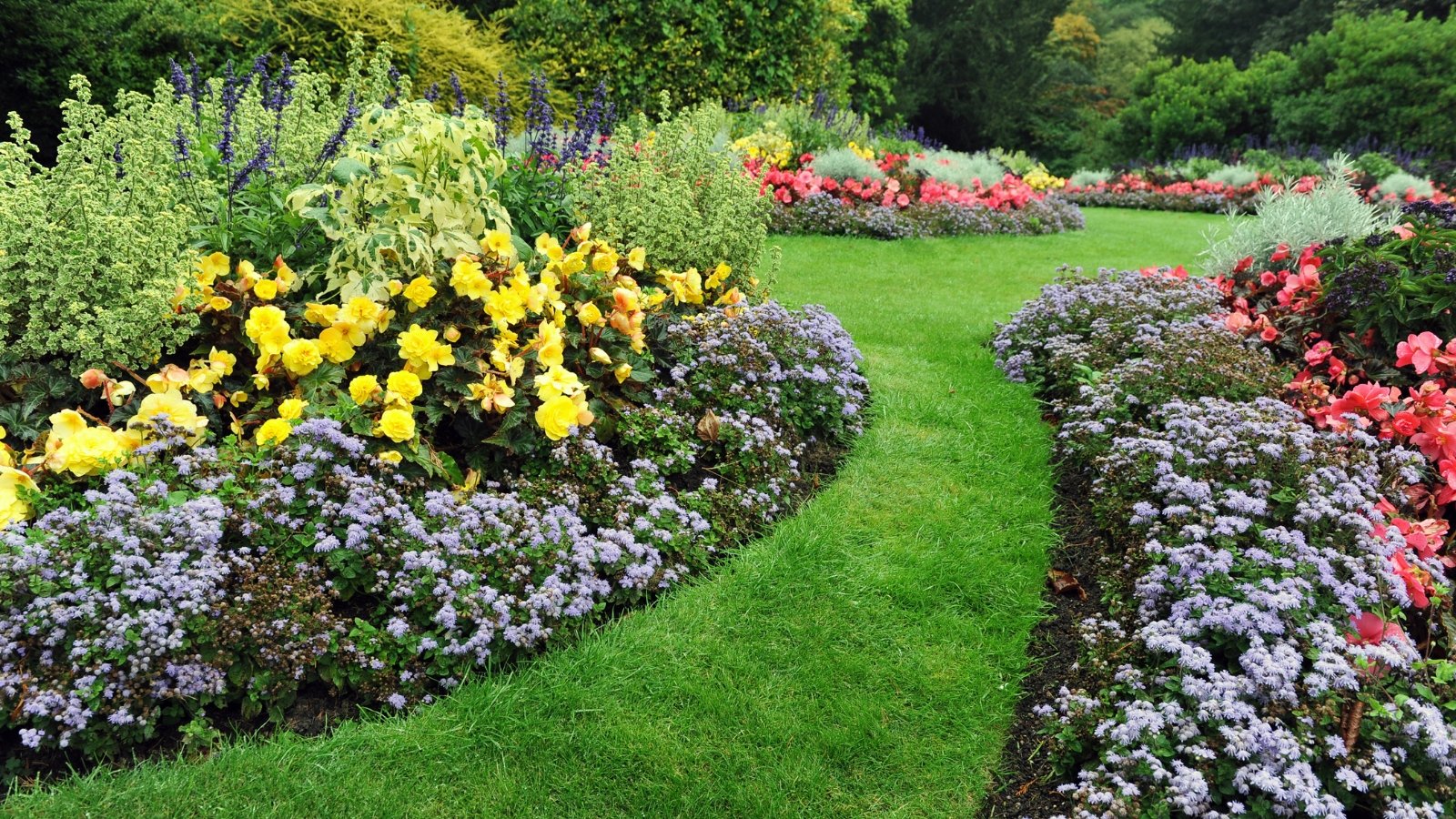
Beginner tip three is to carefully select your flower bed location. Two main factors will come into play in selecting a good location for your garden. Sun exposure is one of them, and the other is drainage. The sun exposure in an area will dictate which flowers will grow best there. If your chosen location is a partial shade location, you’ll not want to plant things there that require full sun.
Drainage is another very important factor in choosing your garden location. Soil with poor drainage makes gardening quite complicated. Many plants are susceptible to root rot and do not tolerate wet feet. If you have no space that doesn’t have a drainage issue, you will have to do some work to create better drainage. You can also plant only those plants that don’t mind growing in swampy conditions.
It will be easiest to determine drainage after a hard rain. Observe the different potential locations after rain to see if there are places where the water collects and doesn’t dissipate very shortly after the rain ceases.
Test and Prepare Your Soil
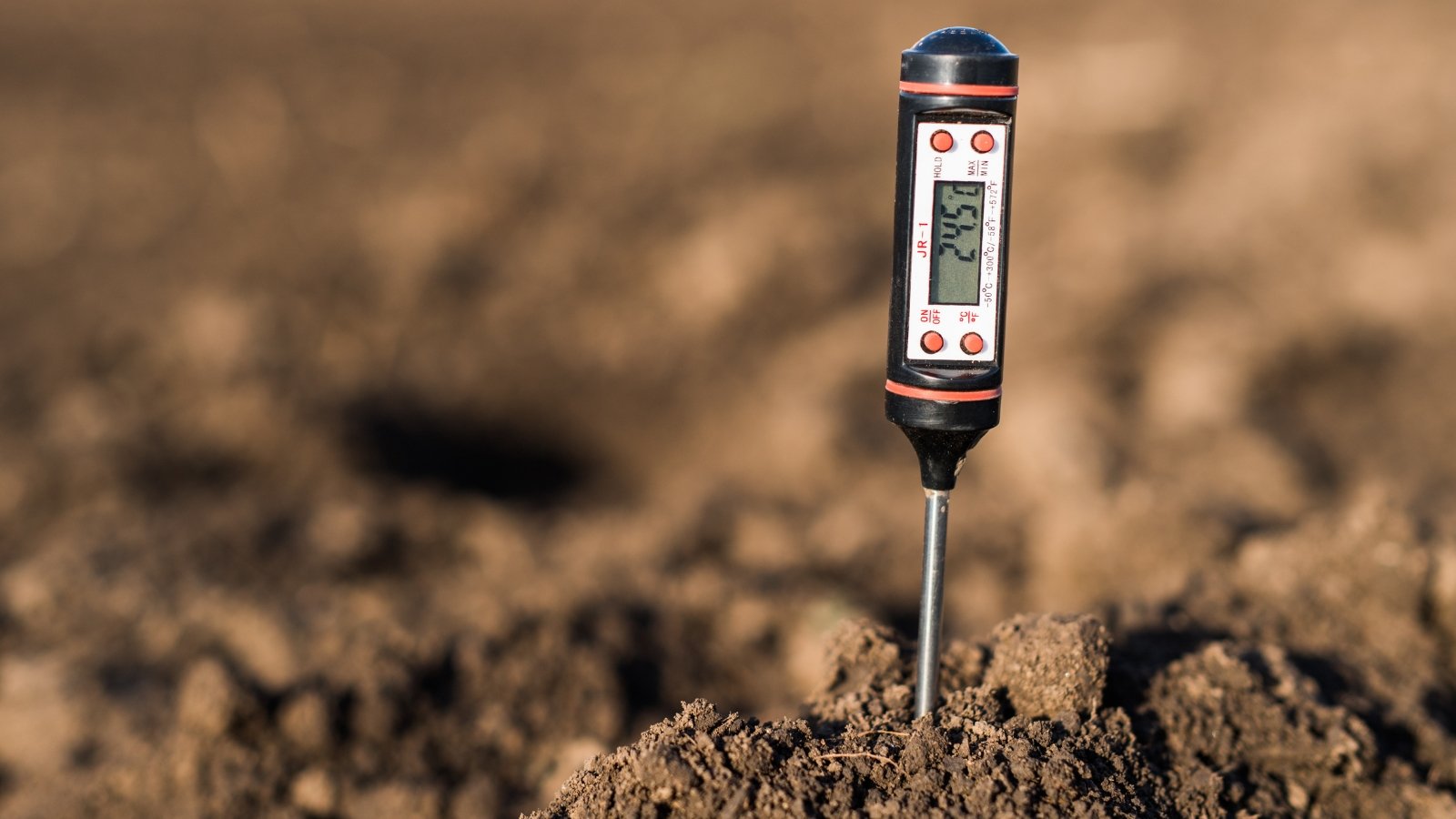
Getting to know your soil is beginner flower garden tip four. A high-quality soil test will tell you which macro and micronutrients are in your soil, and which are lacking. Within a week or so, you’ll get easy-to-read results in a handy PDF format with clear amendment recommendations.
You should also consider the composition of your soil, as it is closely linked with drainage. Very dense soil types tend to have more issues with drainage. Likewise, looser soil types usually drain well. The pH of your soil and nutrient profile are other tools that a comprehensive soil test will provide.
The pH of your soil also plays a role in which plants will thrive in your garden. You can alter the pH, but again, this is an ongoing task that needs to be carried out periodically. Choosing plants that thrive in the type and pH of soil that you already have will cut down on maintenance.
Choose Flowers for Your Space and Experience
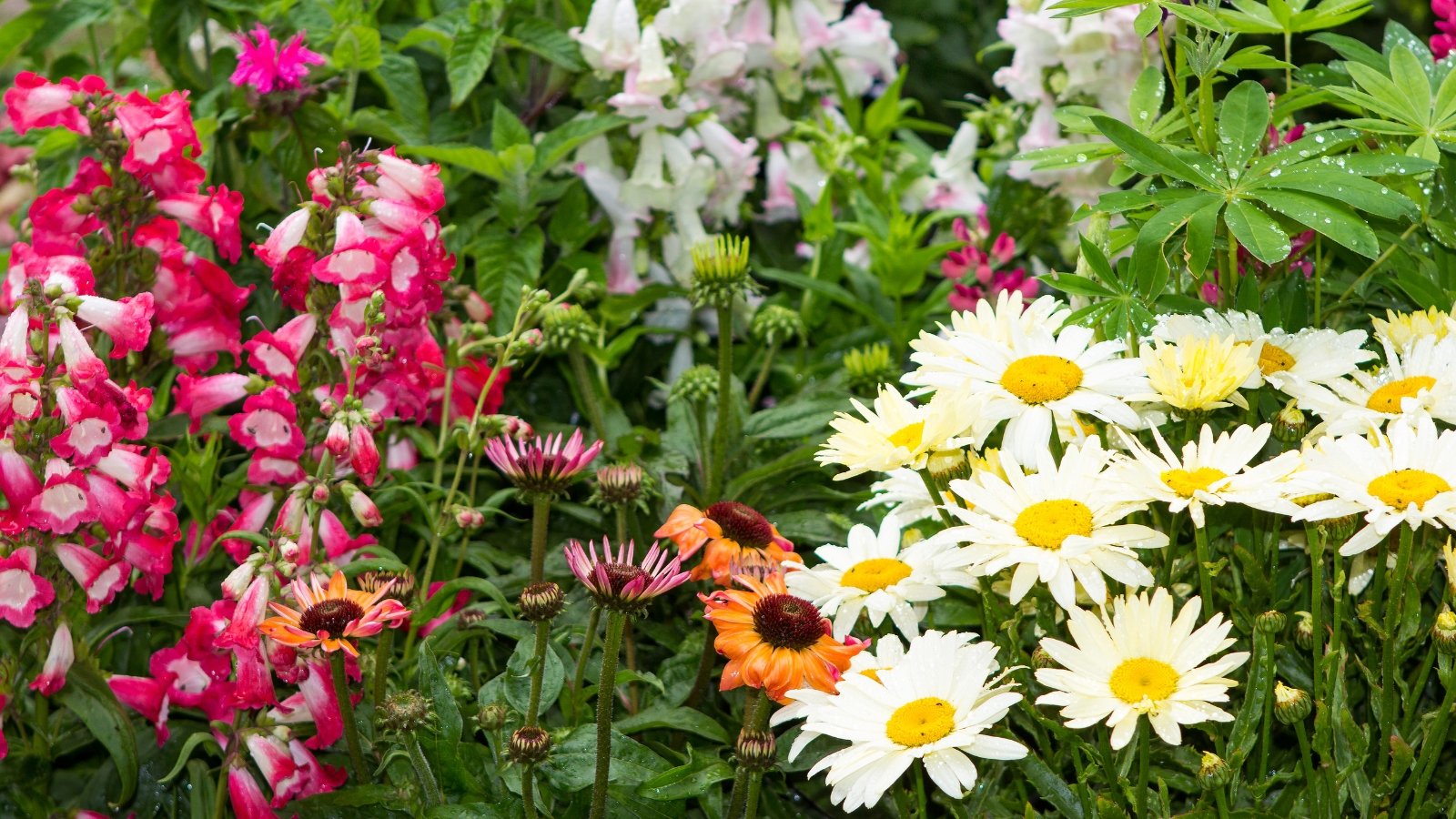
Now that you have a comprehensive view of your soil, climate, and environment in general, the fun part is selecting which plants you intend to grow. Seed packets commonly tell you what zones will support a plant.
When selecting perennial plants, the climate zone is an integral factor. Your zone is determined by temperature and long-term weather patterns in the area. If a plant is not indicated for your zone, it is probably because it can’t survive the low temperatures in your region. It may also need a period of cold to induce dormancy, and your climate is too warm.
It is important to stick to zone guidelines when selecting perennials. You don’t want to end up with a bunch of dead plants next spring. Some plants that are not indicated for a certain zone can be planted one zone higher or lower if special care is taken. This can be as simple as mulching to protect the roots.
Selecting annual plants is easier, as most of these plants can grow in zones 2-11. That covers a lot of territory. Some annuals will self-seed. This means that once you’ve planted them in your garden, they are likely to return the following spring. For others, you’ll have to start over from seeds or starts.
Create a Plan
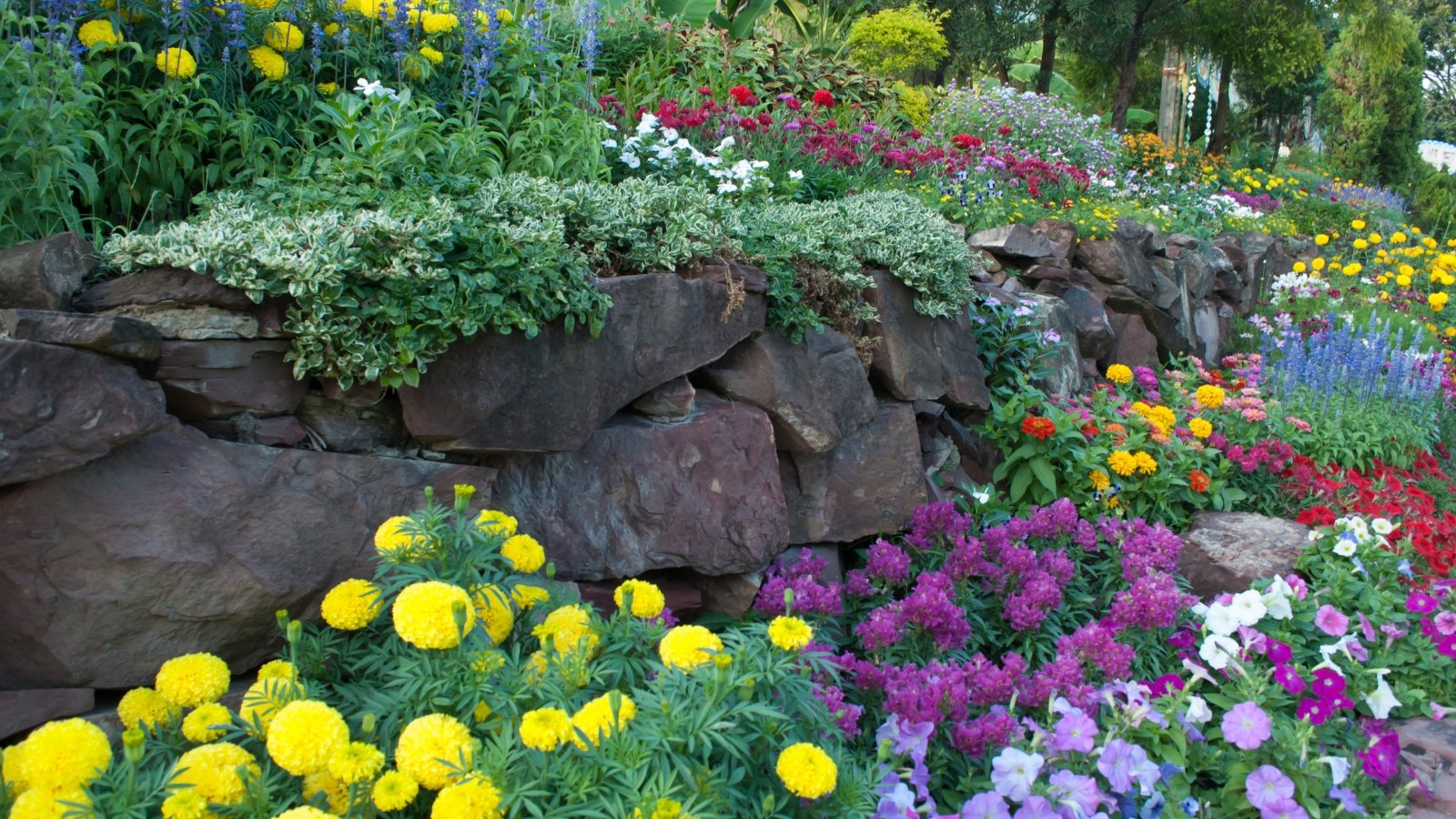
If you’ve already made a map of your chosen space, great! If not, beginner flower garden tip five is to draw up a plan. Consider the sizes of each plant you intend to have in the garden. Account for how large each plant will be at maturity and whether it will affect other plants nearby. This could be by creating shade or by using a lot of nutrients in the soil.
Design is a matter of personal preference, but it is nice to have an idea of what you would like your finished product to look like. Granted, a garden is a work of constant progress. But, if you like a specific style, it’s good to have a long-term vision for your garden.
You may be starting your garden with a small plot. However, if you intend to expand your garden, you should consider how this portion will fit in with the final product. If you have a rough idea of your final plan, it will be easier to execute.
Once your plan is determined, it’s time to plant your seeds or plants! Pay attention to the suggestions on seed packets. If you are planting starts, take a look at our planting guides to see how these are best planted.
Observe Often for Pests and Diseases
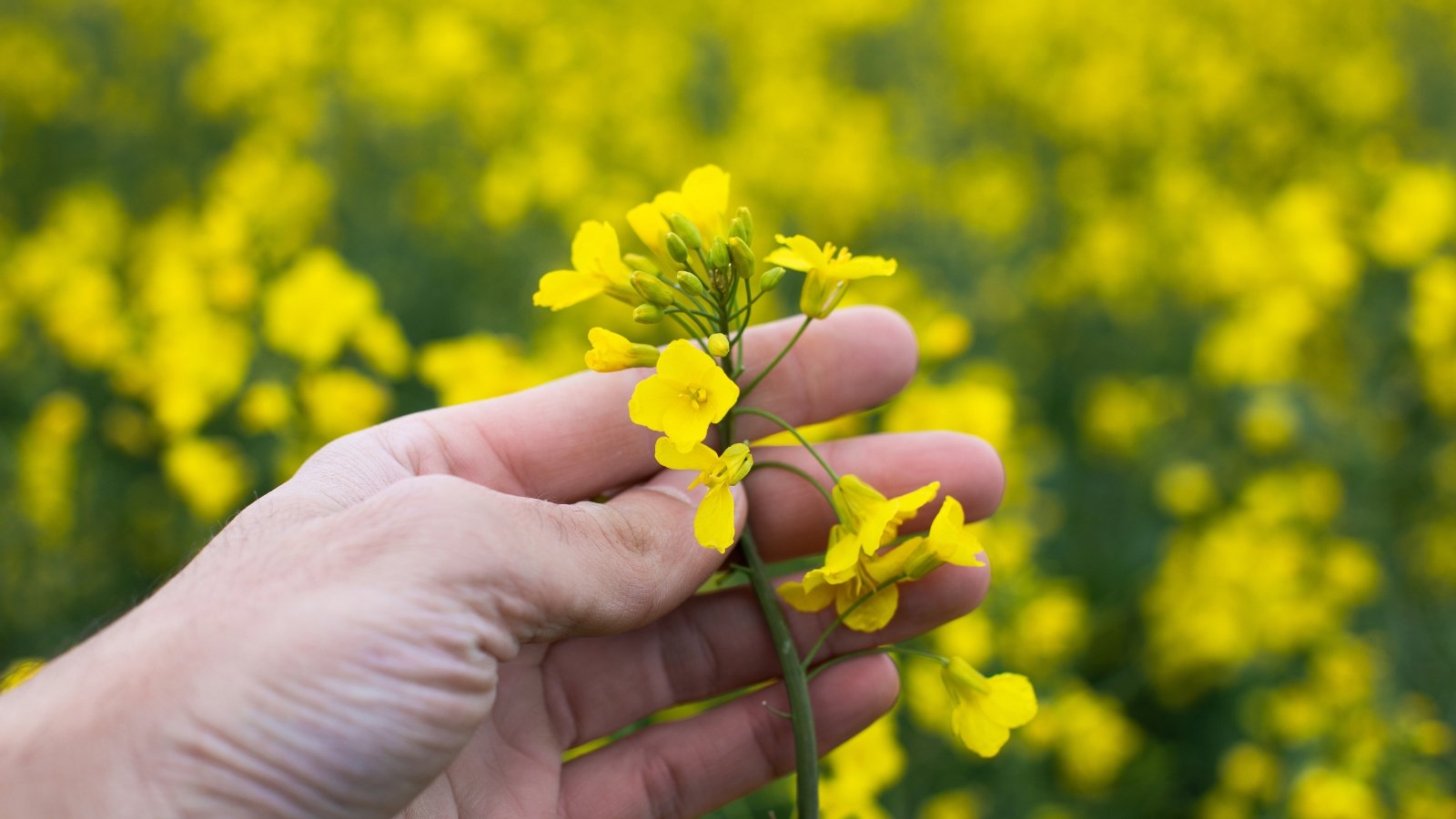
Once your garden is in full swing, there are maintenance factors to consider. Beginner flower garden tip six is to inspect your plants regularly for signs of damage due to disease or insect infestation. It’s a good idea to look over your garden frequently. That way, if these issues crop up, you can deal with them swiftly.
Harmful insects that commonly find their way into the garden include aphids, scales, whiteflies, thrips, leafminers, slugs, and snails, to name a few. Keeping harmful insect populations under control requires some intervention. Before resorting to pesticides, consider planting a diverse garden that attracts predatory insects as natural pest control.
Signs of insect infestation typically appear first on new growth. This is where insects are most likely to feed because the soft tissue is easier to pierce the surface of. This tender new growth is tasty. You may notice shriveling leaves and flowers or an absence of flowers. Some pests will eat holes in your plants, while others will drain the plant of water and nutrients.
Another byproduct of insect infestation is black sooty mold. As insects feed on the sweet sap in your plants, they leave behind them a sticky excrement called honeydew. This creates the perfect environment for this fungal disease to grow. The fungus interferes with photosynthesis and will leave your plants looking pale and lackluster.
Some other signs of disease to look for are mold or fungus growing on the leaves, such as powdery mildew, which looks like white powder. Other pathogens can cause yellowing or dieback of foliage, wilt, and sunken lesions on a plant.
Different diseases require different types of treatment. An important step to take is to remove affected tissue as early as possible to stem the spread. From there, you can treat the disease.
Consider the Pollinators
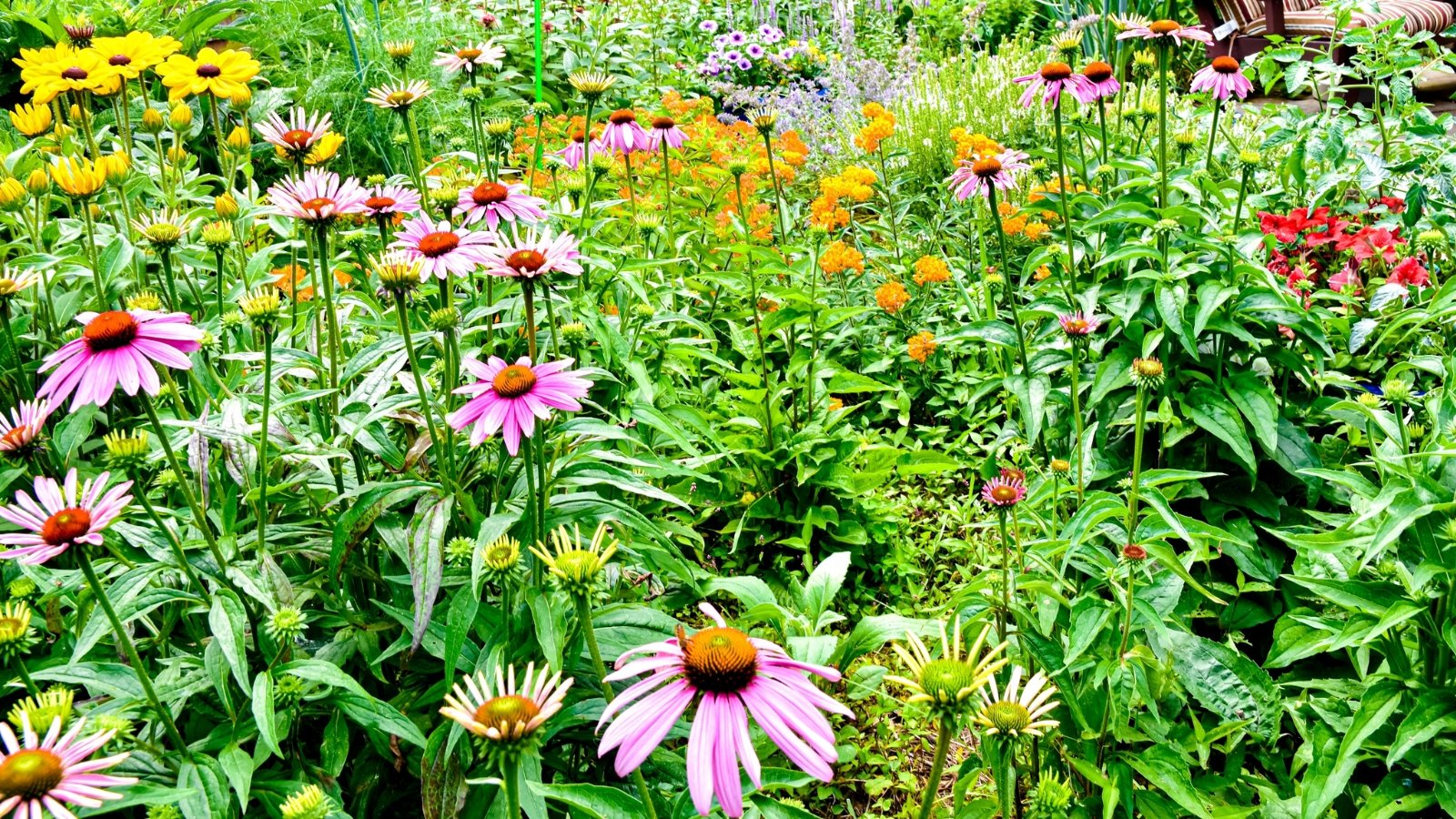
When it comes to getting rid of harmful insects in the garden, it is important to also consider the effects of treatment on beneficial insects. It is a good idea to preserve pollinators or predators that are there to eat the bad bugs. We want to eradicate the bad insects and preserve the beneficial ones.
A great way to eliminate or reduce pest populations is to encourage beneficial insects into the garden. Ladybugs and their larvae are voracious predators. They will help keep your garden pest-free without the use of toxic pesticides.
Green lacewings are another great insect to have in the garden, as they also like to feed on harmful insects. Spiders, likewise, play an important role in the garden. It’s great to keep these helpful insects around and to know how to identify good and bad bugs.
If you must use other pest control methods, it is best to go with those that will do as little damage to pollinators as possible. Neem oil is a good option, but be sure to use it in the early morning or at dusk after pollinators are gone. Use just a light mist. Neem oil is only safe for pollinators after it dries.
Fertilize
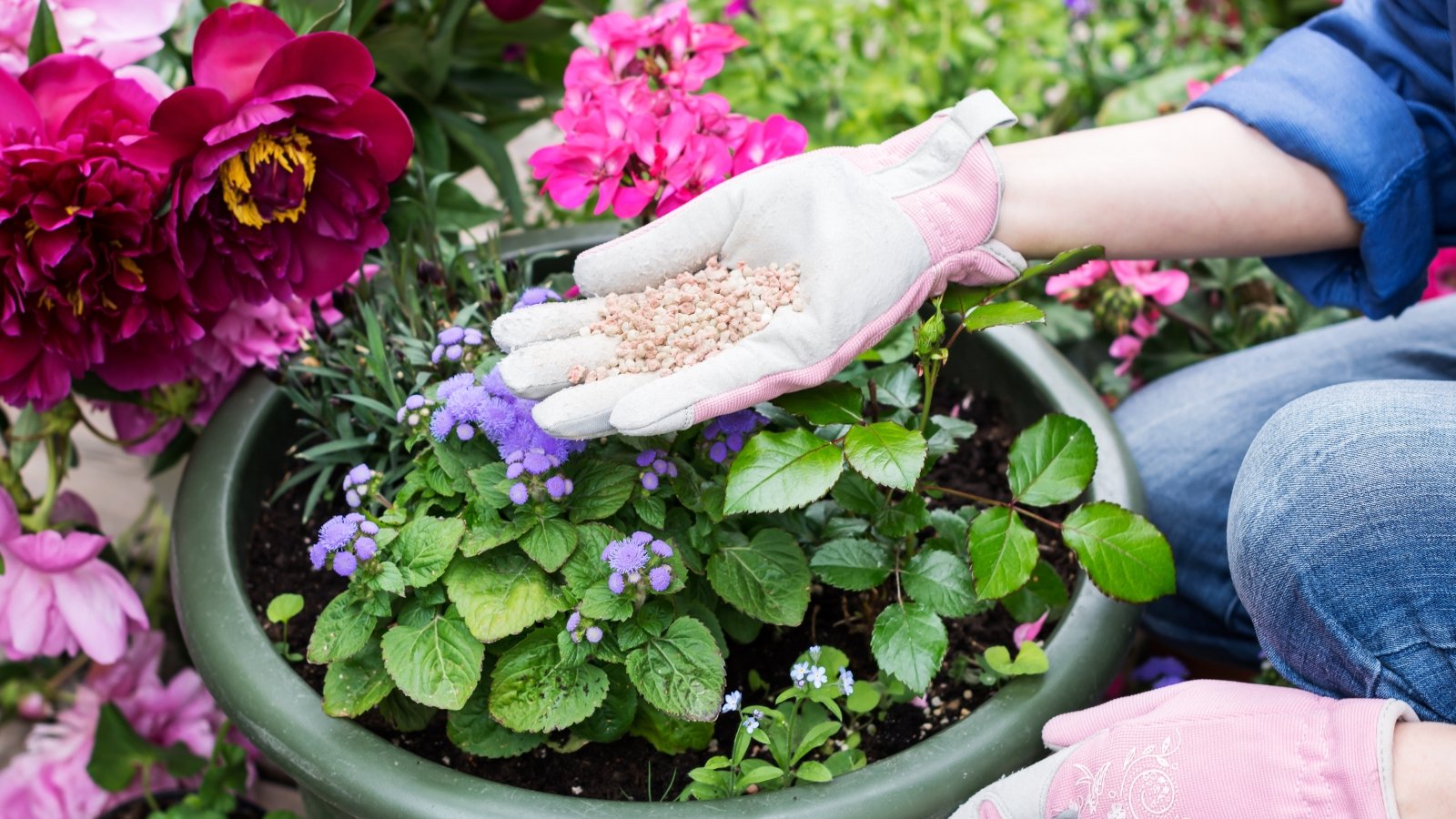
Depending on the type of plants in your garden, you will likely want to fertilize them. This will help them live up to their full potential. Some plants are heavy feeders, meaning that they use up a lot of nutrients. Others can put nutrients back into the soil. Clovers and sweet peas are examples of nitrogen-fixing plants that draw nitrogen into the soil for future plants.
Beginner flower garden tip seven is to consider the fertilizer needs of each plant when you make your plan. That way, you don’t over or under-fertilize one plant based on its neighbor. Most flowering ornamentals do well when fertilized once a month during the growing season.
There are different types of fertilizers. The main difference is between organic and synthetic fertilizers. Slow-release organic fertilizers take longer to deliver nutrients. However, because they break down over time, they nourish your plants for longer. You run less risk of fertilizer burn using these. Synthetic fertilizers provide a fast dose of nutrients, and extended-release formulas can extend their effectiveness. They can be harsh, though.
Applying an all-purpose, balanced fertilizer is generally a good path to take. Bloom-boosting fertilizers are usually lower in nitrogen, which encourages green growth. They are typically higher in phosphorus. In the fertilizer formula, the first number identifies the nitrogen content, the second identifies the phosphorus content, and the third is potassium. If you are unsure about whether or not to fertilize, use a diluted organic liquid at 1/4 to 1/2 strength.
Deadhead Regularly
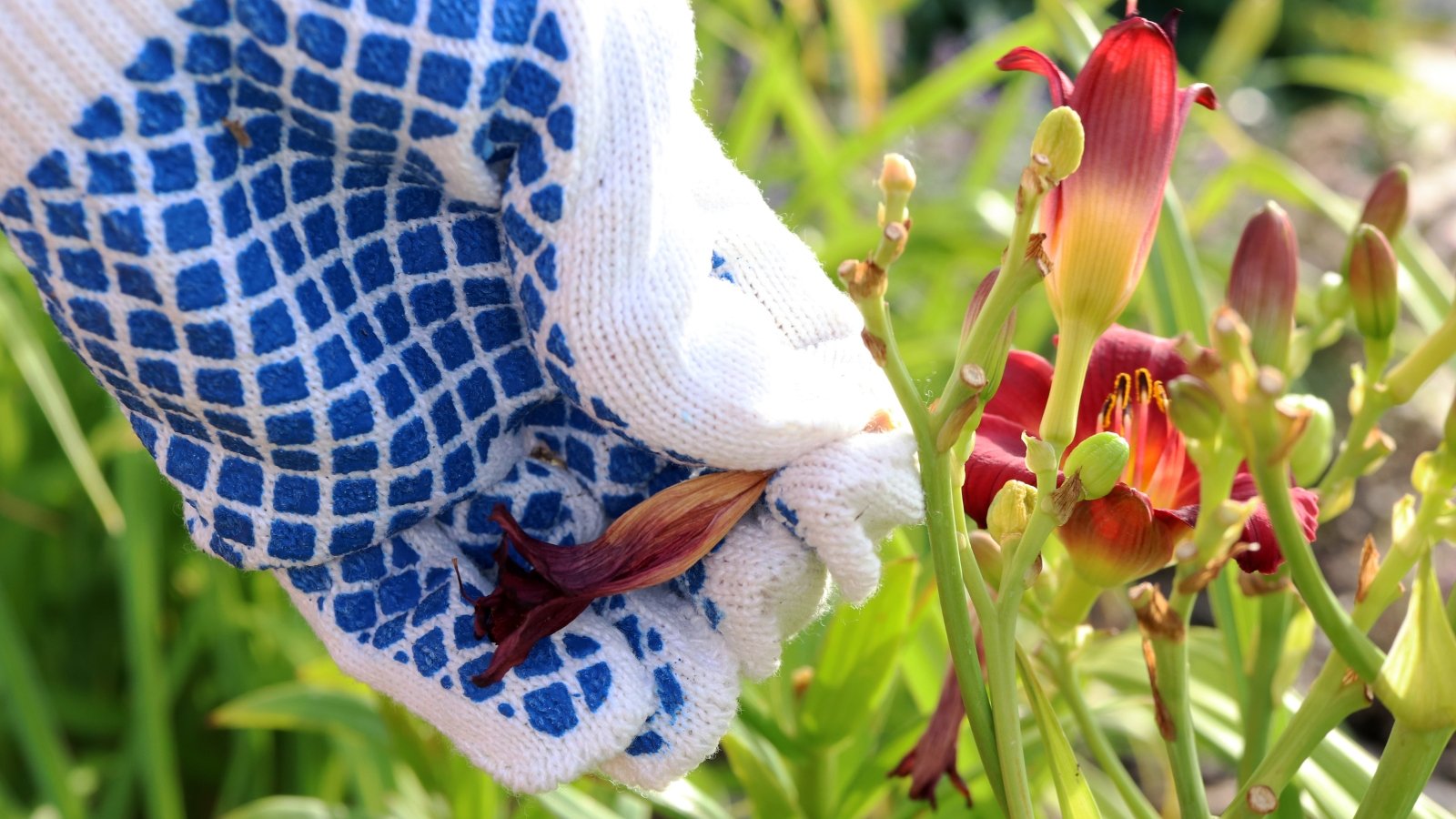
Deadheading is the process of removing spent flowers from your plants. This serves more than one purpose in the flower garden. First, deadheading encourages many plants to produce more flowers. It prolongs the blooming period and increases the yield of the plant. However, this isn’t always the case. Do some research on the plants you’re growing before deadheading.
Deadheading also prevents your plants from going to seed. A pollinated flower will produce fertile seeds. When the flowers are left on the plant to dry, the seeds mature, and the plant will eventually let the seeds fall. This is a desirable event if you want your plants to self-seed, but that is not always the objective. Some plants can take over if they are allowed to seed out.
Preventing your plants from going to seed serves another purpose, and that is prolonging the bloom period. If the plant goes to seed, it thinks that it should fall dormant. By keeping the seed heads at bay, your plants will continue to produce flowers for a longer time.
Enjoy!
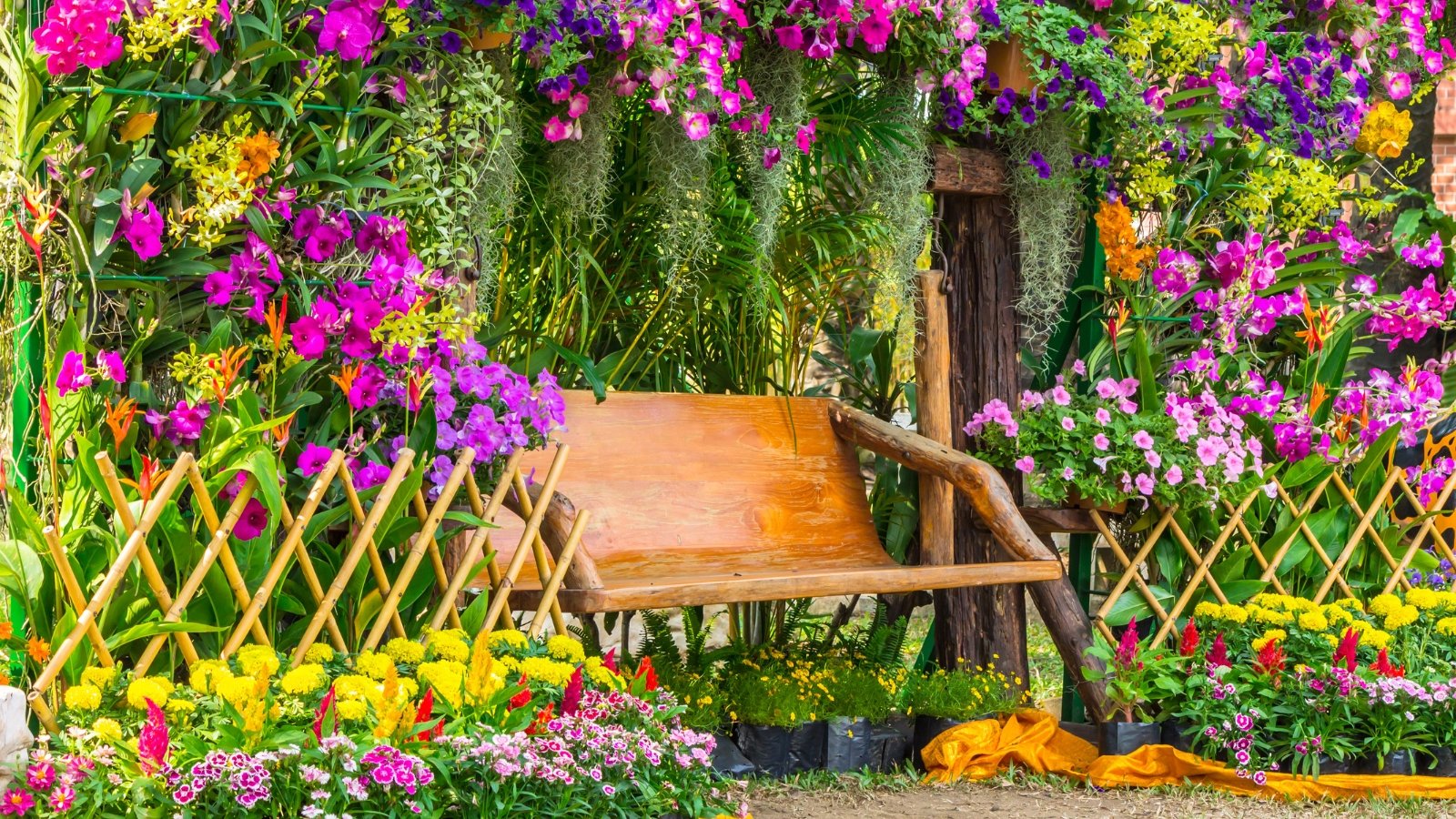
Our last tip: once you’ve planted your garden, don’t forget to enjoy it! I love to walk through my garden, noticing what is new or different. Every day is different in a flower garden.
After all of the planning and work that went into your garden, it only makes sense to carve out time to simply enjoy the fruits of your labor. A great way to do this is to create a living space near the garden. You can also plan your garden around an existing living space.
Final Thoughts
Planting a flower garden can be as simple or involved as you choose. There are simpler methods out there that will do the job of getting flowers growing in your yard. While these methods may work in the short term, you may end up having to start from scratch next year. That wastes money in the process.
Following these tips will help to create a long-lasting and lower-maintenance flower garden. One that will bring you joy for many years.




